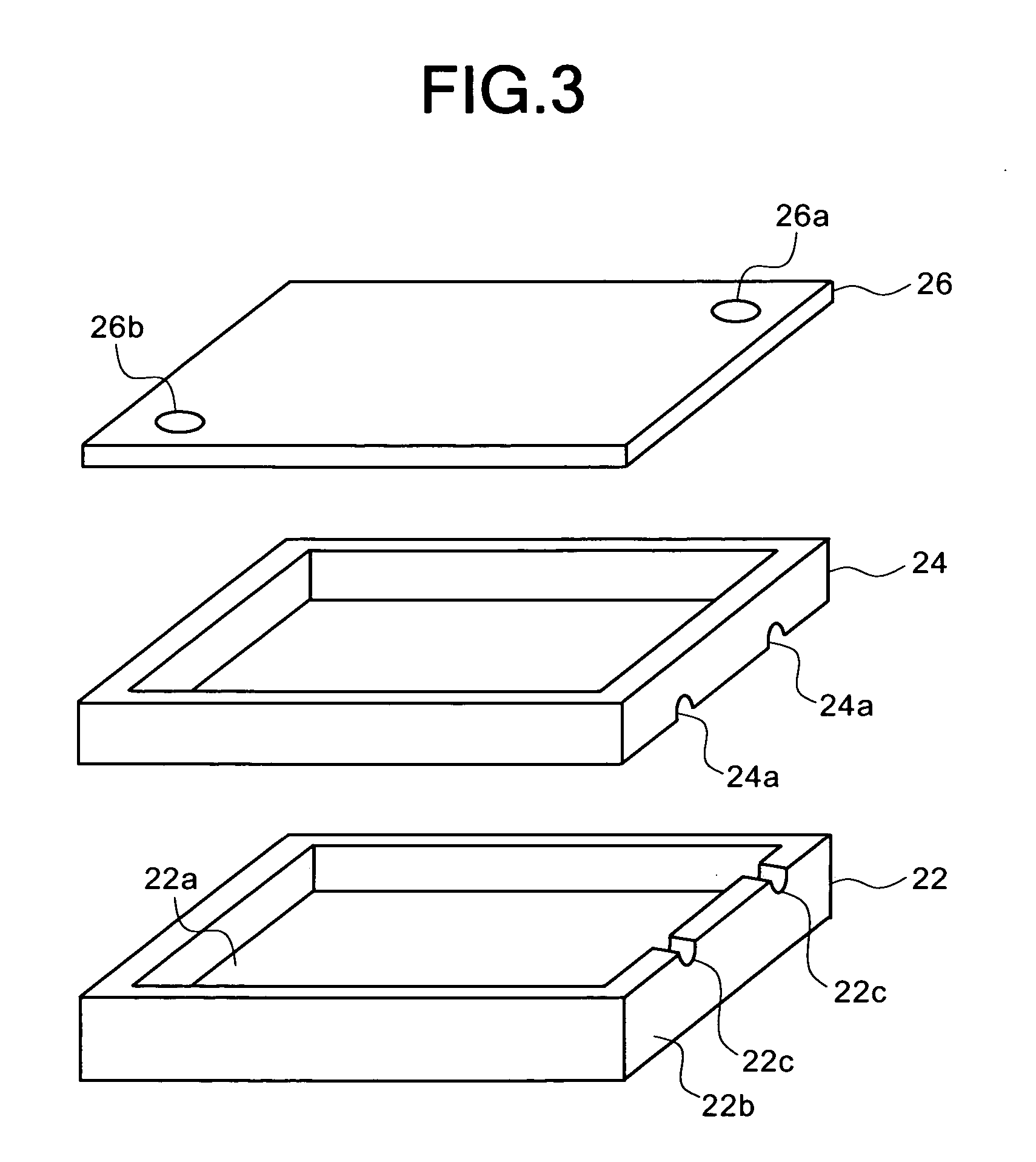Aluminum bonding member and method for producing same
a technology of aluminum bonding and aluminum foil, which is applied in the direction of laminated elements, basic electric elements, light and heating apparatus, etc., can solve the problems of difficult to stabilize the performance of radiating fins, deterioration of heat sink characteristics, and difficulty in ensuring the stability of radiating fins, etc., to achieve simple and inexpensive production of aluminum bonding members and high cooling power
- Summary
- Abstract
- Description
- Claims
- Application Information
AI Technical Summary
Benefits of technology
Problems solved by technology
Method used
Image
Examples
first preferred embodiment
[0033] Referring to FIGS. 1 through 3, the first preferred embodiment of an aluminum bonding member and a method for producing the same according to the present invention will be described below.
[0034] As shown in FIG. 1, an aluminum bonding member 10 in this preferred embodiment comprises an aluminum member 12 having a substantially rectangular planar shape, and a substantially U-shaped tubular member 14 having a substantially annular sectional shape. Both of the opening end portions of the tubular member 14 protrude from the aluminum member 12 to be open to the outside. A portion of the tubular member 14 between the opening end portions is arranged in the aluminum member 12 to contact the aluminum member 12 to be bonded directly thereto. As an example of the tubular member 14, a stainless pipe having a diameter of about 10 mm may be used. Alternatively, a pipe of a metal, such as molybdenum (Mo) or copper (Cu), or a pipe of a ceramic, such as alumina or zirconia, may be used if i...
second preferred embodiment
[0045] Referring to FIGS. 4 through 6, as the second preferred embodiment of an aluminum bonding member and a method for producing the same according to the present invention, an embodiment wherein the same aluminum bonding member as the aluminum bonding member 10 in the first preferred embodiment is bonded directly to a copper / ceramic circuit board will be described below.
[0046] As shown in FIG. 4, similar to the first preferred embodiment, an aluminum bonding member 100 in this preferred embodiment comprises an aluminum member 102 having a substantially rectangular planar shape, and a substantially U-shaped tubular member 104 having a substantially annular sectional shape. Both of the opening end portions of the tubular member 104 protrude from the aluminum member 102 to be open to the outside. A portion of the tubular member 104 between the opening end portions is arranged in the aluminum member 102 to contact the aluminum member 102 to be bonded directly thereto.
[0047] The alu...
third preferred embodiment
[0061] Referring to FIGS. 7 through 10, as the third preferred embodiment of an aluminum bonding member and a method for producing the same according to the present invention, an embodiment wherein the same aluminum bonding member as the aluminum bonding member 10 in the first preferred embodiment is bonded directly to an aluminum / ceramic circuit board will be described below.
[0062] As shown in FIG. 7, similar to the first preferred embodiment, an aluminum bonding member 200 in this preferred embodiment comprises an aluminum member 202 having a substantially rectangular planar shape, and a substantially U-shaped tubular member 204 having a substantially annular sectional shape. Both of the opening end portions of the tubular member 204 protrude from the aluminum member 202 to be open to the outside. A portion of the tubular member 204 between the opening end portions is arranged in the aluminum member 202 to contact the aluminum member 202 to be bonded directly thereto.
[0063] The ...
PUM
| Property | Measurement | Unit |
|---|---|---|
| porosity | aaaaa | aaaaa |
| porosity | aaaaa | aaaaa |
| diameter | aaaaa | aaaaa |
Abstract
Description
Claims
Application Information
 Login to View More
Login to View More - R&D
- Intellectual Property
- Life Sciences
- Materials
- Tech Scout
- Unparalleled Data Quality
- Higher Quality Content
- 60% Fewer Hallucinations
Browse by: Latest US Patents, China's latest patents, Technical Efficacy Thesaurus, Application Domain, Technology Topic, Popular Technical Reports.
© 2025 PatSnap. All rights reserved.Legal|Privacy policy|Modern Slavery Act Transparency Statement|Sitemap|About US| Contact US: help@patsnap.com



